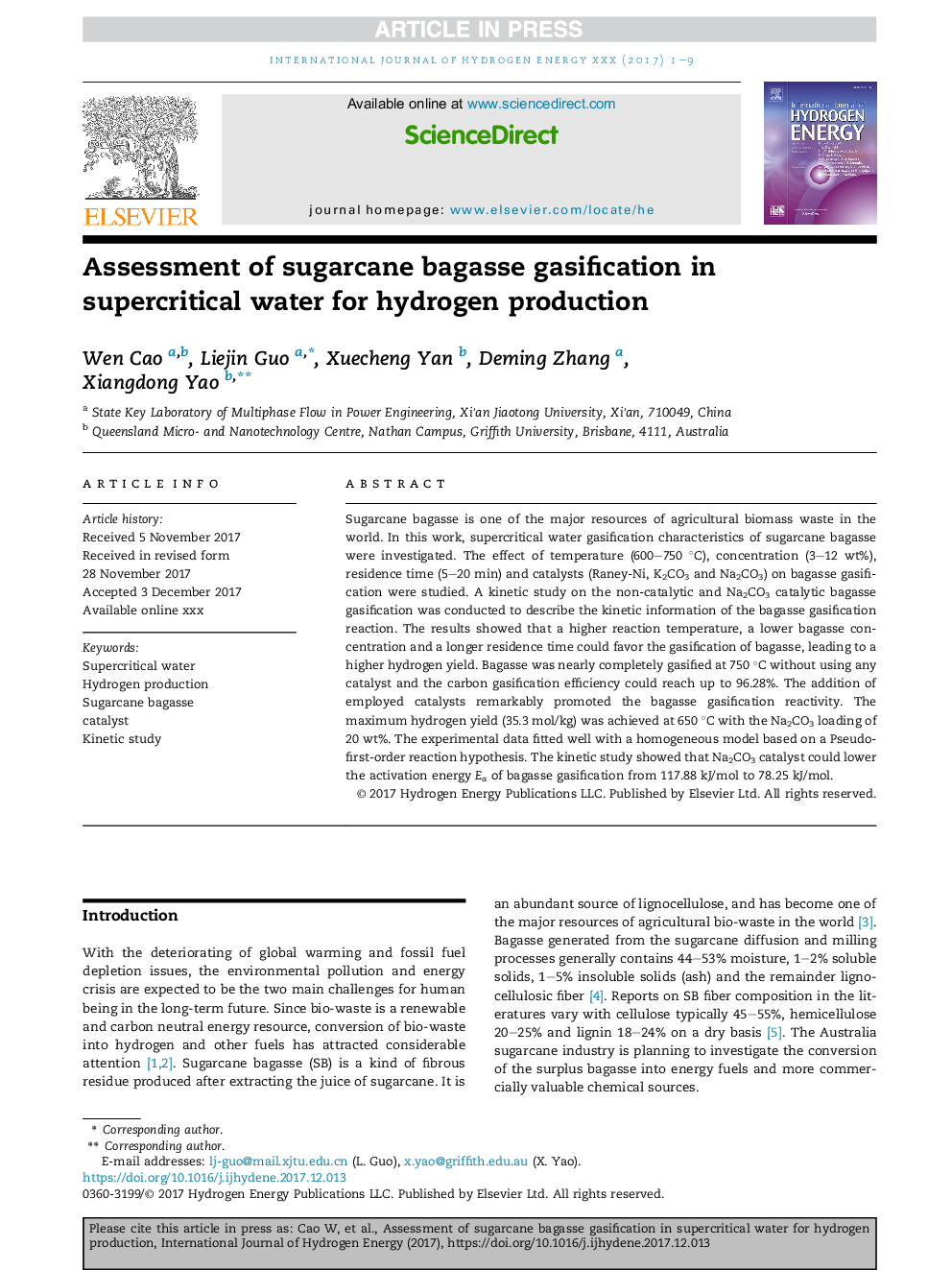| Article ID | Journal | Published Year | Pages | File Type |
|---|---|---|---|---|
| 7705294 | International Journal of Hydrogen Energy | 2018 | 9 Pages |
Abstract
Sugarcane bagasse is one of the major resources of agricultural biomass waste in the world. In this work, supercritical water gasification characteristics of sugarcane bagasse were investigated. The effect of temperature (600-750 °C), concentration (3-12 wt%), residence time (5-20 min) and catalysts (Raney-Ni, K2CO3 and Na2CO3) on bagasse gasification were studied. A kinetic study on the non-catalytic and Na2CO3 catalytic bagasse gasification was conducted to describe the kinetic information of the bagasse gasification reaction. The results showed that a higher reaction temperature, a lower bagasse concentration and a longer residence time could favor the gasification of bagasse, leading to a higher hydrogen yield. Bagasse was nearly completely gasified at 750 °C without using any catalyst and the carbon gasification efficiency could reach up to 96.28%. The addition of employed catalysts remarkably promoted the bagasse gasification reactivity. The maximum hydrogen yield (35.3 mol/kg) was achieved at 650 °C with the Na2CO3 loading of 20 wt%. The experimental data fitted well with a homogeneous model based on a Pseudo-first-order reaction hypothesis. The kinetic study showed that Na2CO3 catalyst could lower the activation energy Ea of bagasse gasification from 117.88 kJ/mol to 78.25 kJ/mol.
Related Topics
Physical Sciences and Engineering
Chemistry
Electrochemistry
Authors
Wen Cao, Liejin Guo, Xuecheng Yan, Deming Zhang, Xiangdong Yao,
